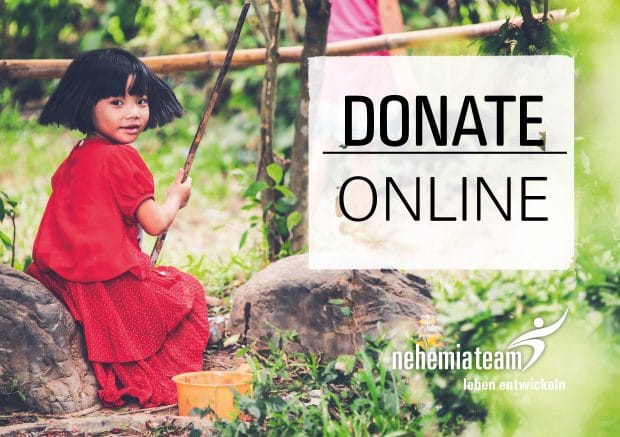In a number of kindergartens and preschools which have been developed or supported by the Nehemiah Network in several different countries, the principles and methods of Montessori-Education have been used successfully for several years now. Wolfgang Oelschlegel, an educator and leader of the Nehemiah Team Borneo, briefly summarises what Montessori is all about.
First of all: “Montessori” is not a philosophy based on an anthroposophy or some such view of life and human nature, but rather, it is a comprehensive educational system based on empirical research. Maria Montessori, a Catholic Christian born at the end of the 19th Century and the first female doctor in Italy, observed children (mainly up to the age of six) in their living and learning environments and from her observations deduced principles that could be used to reach their developmental goals.
The Basics
The Montessori concept is holistic. Being far ahead of her time, Maria Montessori regarded the child as a complete person, a developing but complete individual, not just an unfinished adult, or of lesser value than a mature person. Each child has an inner urge to grow and shape its own personality. It wants to discover, understand and “construct its own self”. “Help me to do it myself” is what each child asks of its parents, teachers or other adults.
A simple analogy: Just as a sponge absorbs liquids, children, from the moment of birth, absorb all the stimuli from their environment and unconsciously or consciously develop their minds and abilities. During certain times in the development, so-called “sensitive periods”, a child will be particularly responsive and receptive in a certain area and therefore will learn more quickly and intensively. Some of these areas are: sensory and motor development, social and emotional competencies, everyday practical life skills, and of course, language, mathematical and logic development.
Montessori put a special emphasis on what she called “cosmic education”. She understood human beings as God-created, and intended to be creative caretakers of creation. Responsibility and self-reliance are needed for this. For that very reason, the character, social and emotional development of the child is not to be left to chance, but purposefully guided.
What sounds like dry theory finds its practical expression in the design of the learning environment, the material equipment and the guiding principles of the learning process.
To learn means to be purposefully engaged – what may look like playing to an adult is actually work for the child.
The Prepared Environment
The educator is responsible to create a learning environment and the equipment or learning materials, thus giving an environment for the child to become increasingly independent of adults as it learns, acquires skills and grows. The children learn to value and take care of the equipment. The furniture is child-sized. Graceful movement, mutual respect and appreciation of silence (stillness) are cultivated.
The learning apparatus is structured and strategically arranged in the classroom.
This external structure gives orientation and helps the developing mind to come to an “inner order”.
The classroom environment is attractive and aesthetic in its design, leading the children to appreciate and take care of it.
Learning by Exploration
Being of high quality and attractive appearance, the Montessori apparatus invites the child to interact with it. All materials are arranged on open shelves and are freely accessible for the children. There is only one set of each piece of equipment, so the children learn to appreciate it and also to be considerate in sharing with each other.
The children can freely choose what they use and do so according to their stage of development or “sensitive period”. When the teacher sees that the child is interested, he or she offers or “presents” that material to the child. This means that by demonstration he explains the correct use of the material. Once the child is able to correctly use the material, the educator can withdraw and observe.
Montessori groups are mixed age groups and follow the model of a family. Appropriate to age and development, the children have responsibilities and duties, the older ones becoming models for the younger ones.
Friedensreich Hundertwasser, Jeff Bezos, Anne Frank and Larry Page ‚ were all Montessori students.
It will be interesting to see what becomes of the students from the kindergartens in our different nehemia projects.
